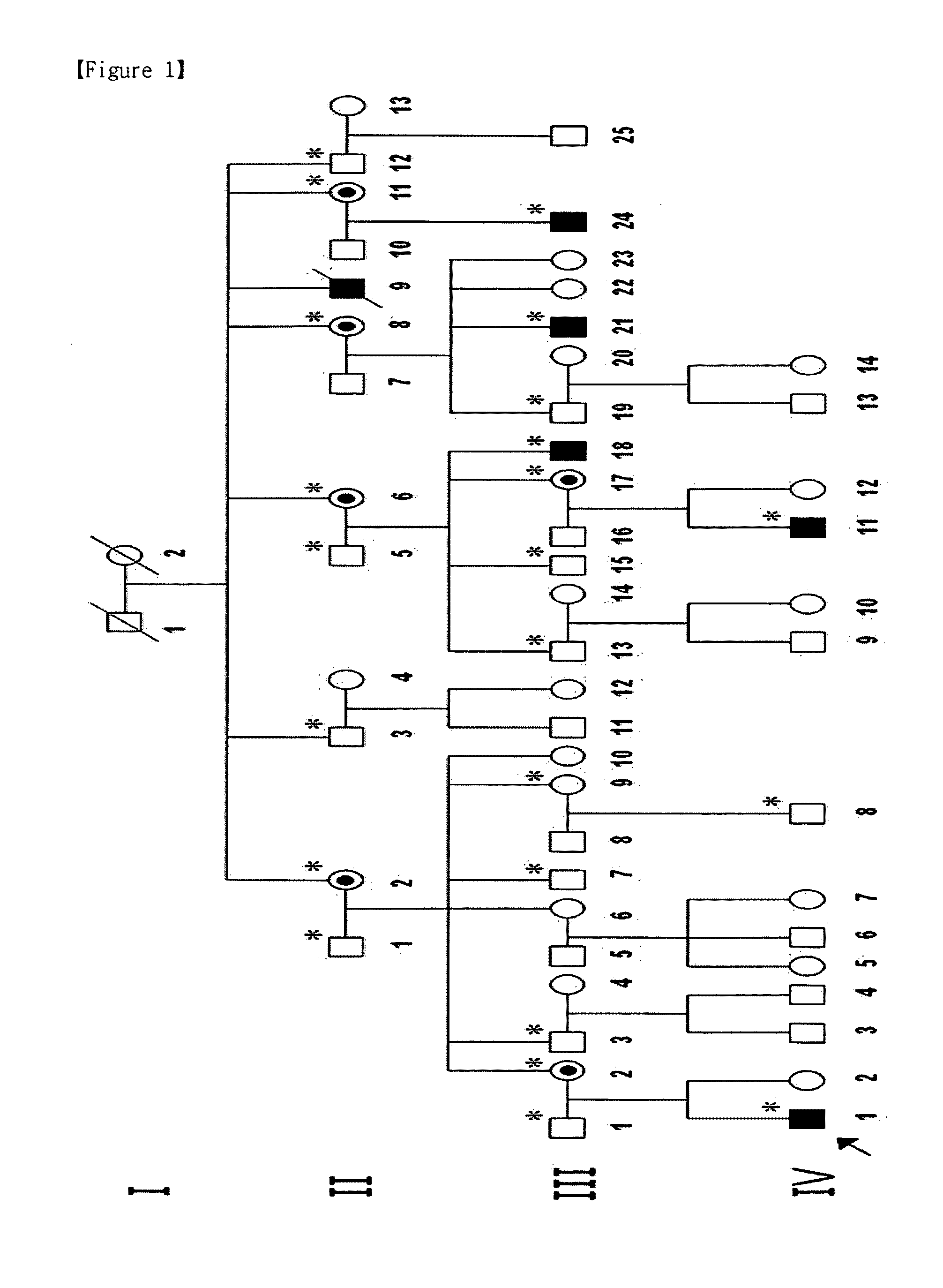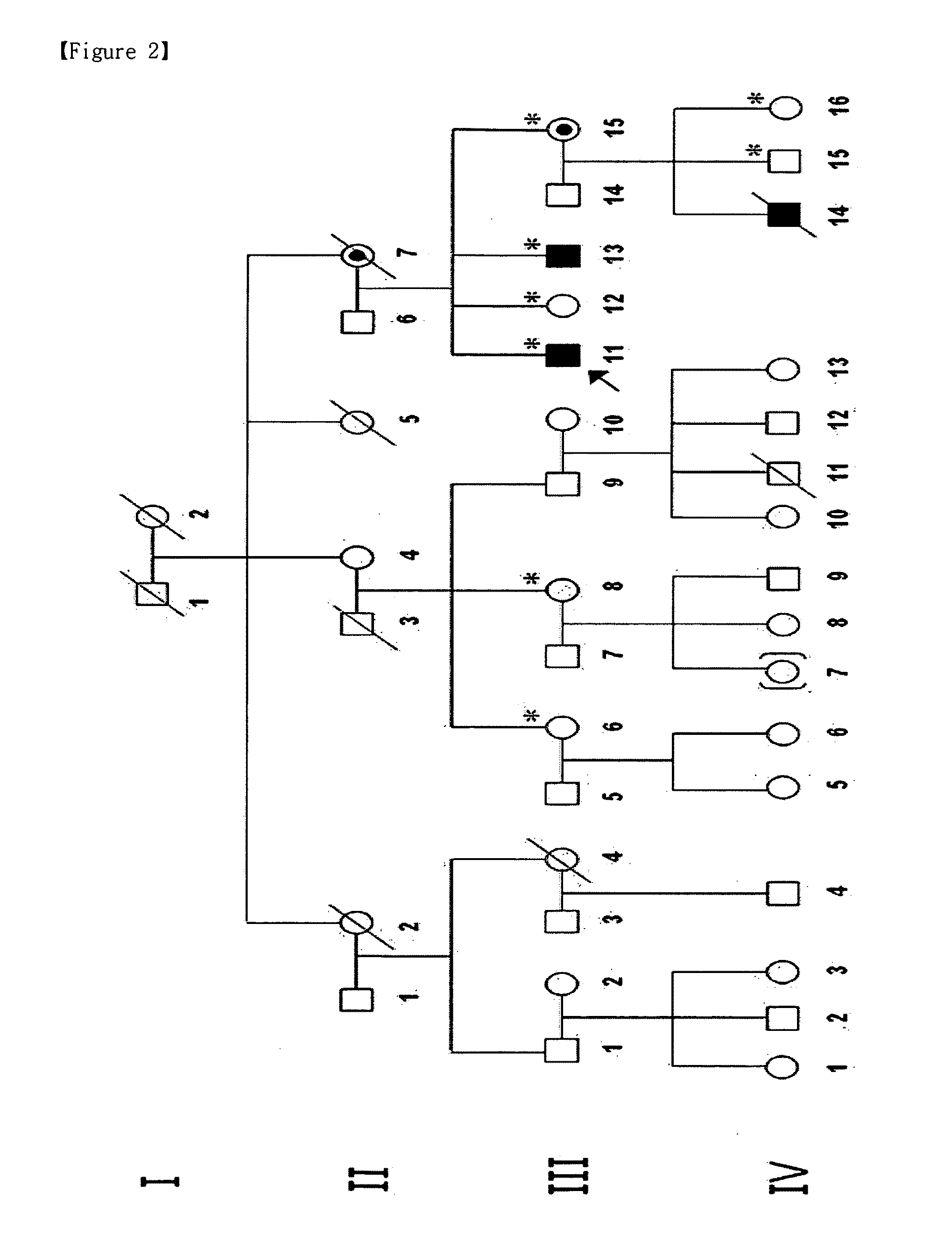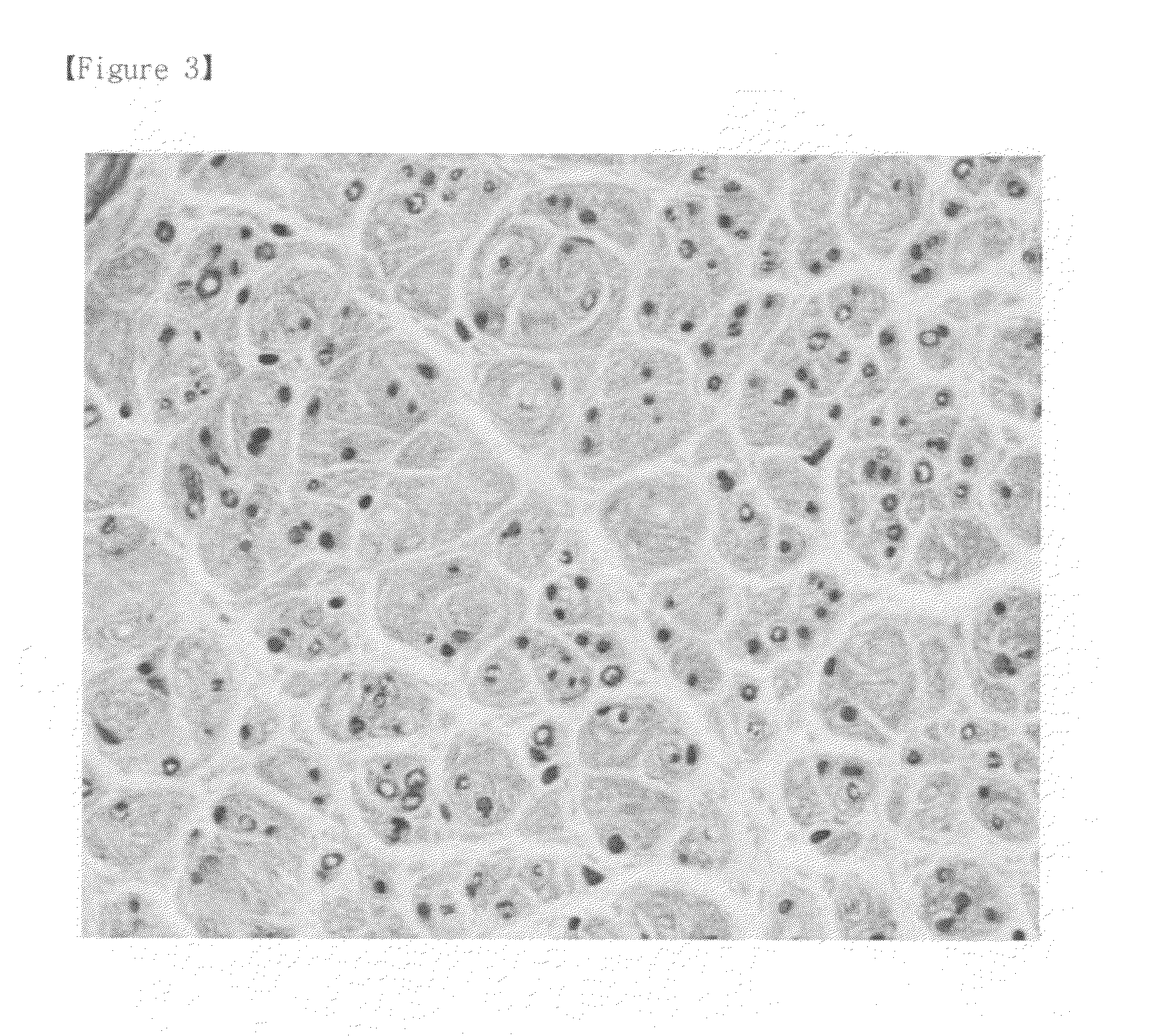Mutation of prps1 gene causing cmtx5 disease and the use thereof
- Summary
- Abstract
- Description
- Claims
- Application Information
AI Technical Summary
Benefits of technology
Problems solved by technology
Method used
Image
Examples
example 1
Screening of PRPS1 Gene and Identification of Mutation
[0046]The study in the present invention was approved by the Institutional Review Board of the Samsung Medical Center, and written informed consent was obtained from all adult subjects and from parents on behalf of their children. Blood samples were collected and genomic DNA was isolated from peripheral blood leukocytes by the use of the Wizard genomic DNA purification kit, according to the manufacturer's instructions (Promega). All coding exons and their flanking intronic sequences of the candidate genes were amplified by PCR using the primers (SEQ ID NO: 2 to SEQ ID NO: 15) designed by the present inventors with the Primer3 program. Cycle sequencing was performed with the BigDye Terminator Cycle Sequencing Ready Reaction kit (Applied Biosystems) on the ABI 3100 Genetic Analyzer (Applied Biosystems). In the course of screening the genes expressed in the inner ear, the present inventors identified a 344T→C transition mutation (SE...
example 2
Examination of Frequency of PRPS1 Mutations in CMT Disease
[0048]To further examine the frequency of PRPS1 mutations in CMT, the present inventors performed direct sequencing of all coding exons and exon-intron boundary sequences of PRPS1 in 101 patients with CMT whose previous genetic test results had ruled out CMT1A (MIM 118220), the most common subtype of CMT (57 male patients and 44 female patients). As a result, the present inventors observed a single patient with a sequence variation in exon 4 (420G→A), which was considered to be a rare synonymous polymorphism (P140P) on the basis of our further observation of its occurrence in control chromosomes (1.1%; 2 / 185), and no patient had a mutation that altered the amino acid sequence of PRPS1. This indicates that PRPS1 is specifically mutated in CMTX5, causing the unique symptom triad, and that the gene is highly conserved even within the human species.
example 3
Evaluation of Function of PRPS1 Mutant
[0049]To evaluate the function of the mutation, the present inventors determined the PRPS1 enzyme activity from fibroblasts obtained from skin biopsy samples from three patients with CMTX5 (CMTX5:IV-1, IV-11, and III-18), two nonaffected individuals in the CMTX5 family (CMTX5:III-13 and IV-2), and two unrelated adult control individuals (C-1 and C-2). Then, the PRPS activity was determined. For this purpose, 100 μl of cell extract (obtained from patients in the Samsung Medical Center during a period ranging from January, 2004 to December, 2007) was incubated for 60 min at 37° C., with 100 μl of a pH 7.4 reaction mixture containing: TrisHCl 50 mM, MgCl2 5 mM, EDTA 1 mM, DTT 1 mM, NaPi 32 mM, saturating concentrations of the substrates ATP (0.5 mM) and ribose 5-phosphate (0.15 mM), and P1 P5 diadenosine pentaphosphate (Ap5A, an inhibitor of adenylate kinase, 0.25 mM). On completion of the incubation, the reaction was stopped by heating at 70° C., ...
PUM
| Property | Measurement | Unit |
|---|---|---|
| Density | aaaaa | aaaaa |
Abstract
Description
Claims
Application Information
 Login to View More
Login to View More - R&D
- Intellectual Property
- Life Sciences
- Materials
- Tech Scout
- Unparalleled Data Quality
- Higher Quality Content
- 60% Fewer Hallucinations
Browse by: Latest US Patents, China's latest patents, Technical Efficacy Thesaurus, Application Domain, Technology Topic, Popular Technical Reports.
© 2025 PatSnap. All rights reserved.Legal|Privacy policy|Modern Slavery Act Transparency Statement|Sitemap|About US| Contact US: help@patsnap.com



